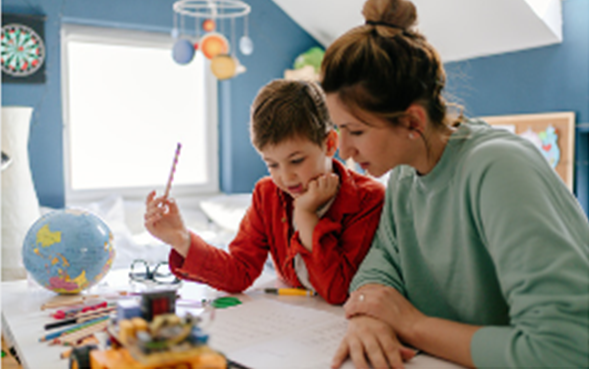
En el presente, el confinamiento generado a propósito de Covid-19 en muchos países del mundo ha ocasionado que la atención de las instituciones educativas se lleve a cabo de manera virtual a través de guías de estudio, tele-clases, video-conferencias o algún otro medio educativo a fin de continuar con el proceso de enseñanza y aprendizaje de niños y adolescentes en todos los niveles educativos.
Fuente Source: https://pixabay.com/es/images/search/tareas%20escolares/
At present, the confinement generated by Covid-19 in many countries of the world has caused the attention of educational institutions to be carried out virtually through study guides, tele-classes, video-conferences or some other educational means in order to continue with the teaching and learning process of children and adolescents at all educational levels. <
Se trata de la educación a distancia, modalidad de estudio que se remonta al inicio de la era cristiana con las cartas de San Pablo a distintos grupos, a fin de enseñar la vida y obra de Jesucristo a aquellas comunidades a las que no podía asistir personalmente. Con los siglos y el avance de la tecnología, se crearon programas de enseñanza de inglés por correo tradicional a través de libros o guías de estudio. Con la invención del Internet, y especialmente con la llamada “era 2.0” adquiere mayor auge la educación a distancia al crearse programas on line para el aprendizaje en tiempo sincrónico y asincrónico dirigido a amas de casa y personas que por su trabajo o alguna otra condición no podían acudir a centros de formación.
This is distance education, a mode of study that dates back to the beginning of the Christian era with St. Paul's letters to different groups, in order to teach the life and work of Jesus Christ to those communities that he could not attend in person. Over the centuries and with the advancement of technology, traditional mail-order English teaching programs were created through books or study guides. With the invention of the Internet, and especially with the so-called "era 2.0", distance education has become more popular with the creation of online programs for learning in synchronous and asynchronous time, aimed at housewives and people who, because of their work or some other condition, could not attend training centers.<
Con la pandemia, la Educación a distancia ha cobrado un significativo auge, puesto que ha permitido que el mundo no se detenga, se transforme, al continuar con la formación académica desde el hogar. Ahora bien ¿Ha sido fácil trabajar desde casa con niños de Educación Preescolar y Primaria? En esta situación existen tres agentes protagonistas: en principio el maestro, quien define los contenidos y actividades a ser trabajados; los niños, quienes deben aprender los contenidos y las familias, quienes se desempeñan como facilitadores del proceso de enseñanza y aprendizaje y terminan siendo mediadores de dicho proceso.
With the pandemic, distance education has gained a significant boom, since it has allowed the world not to stop, but to transform, by continuing with academic training from home. Now, has it been easy to work from home with preschool and elementary school children? In this situation there are three main agents: the teacher, who defines the contents and activities to be worked on; the children, who must learn the contents; and the families, who act as facilitators of the teaching and learning process and end up being mediators of this process.<
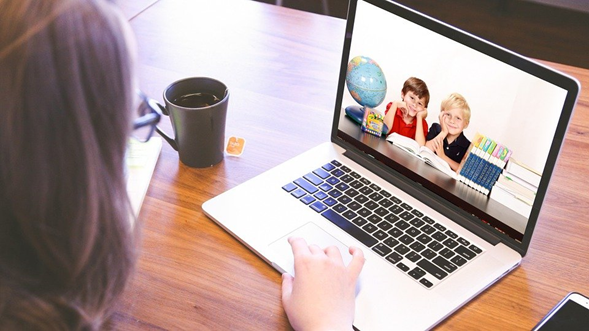
Ante este panorama, es importante destacar que la escuela tradicional no estaba preparada para el salto cuali-cuantitativo de la educación presencial a la Educación a distancia, por lo tanto no existe un manual o libreto que establezca específicamente de qué manera garantizamos que el proceso de enseñanza y aprendizaje sea eficiente. Visto desde esta perspectiva, estamos aprendiendo de la experiencia, no hubo tiempo para ensayos.Fuente Source: https://pixabay.com/es/photos/kids-equipo-ordenador-port%C3%A1til-5560586/
Against this background, it is important to note that the traditional school was not prepared for the qualitative-quantitative leap from face-to-face education to distance education, therefore there is no manual or booklet that specifically establishes how we guarantee that the teaching and learning process will be efficient. Seen from this perspective, we are learning from experience, there was no time for rehearsals.<
¿Qué es lo ideal en la educación a distancia para niños desde los 3 hasta 12 años de edad? en principio que la jornada escolar en casa se lleve a cabo en un horario específico, estructurando una rutina que permita al niño comprender que la formación académica está dentro de sus actividades del día, en un horario establecido.
What is ideal in distance education for children from 3 to 12 years of age? In principle, the school day at home should be carried out on a specific schedule, structuring a routine that allows the child to understand that academic training is part of his or her daily activities, on a set timetable. <
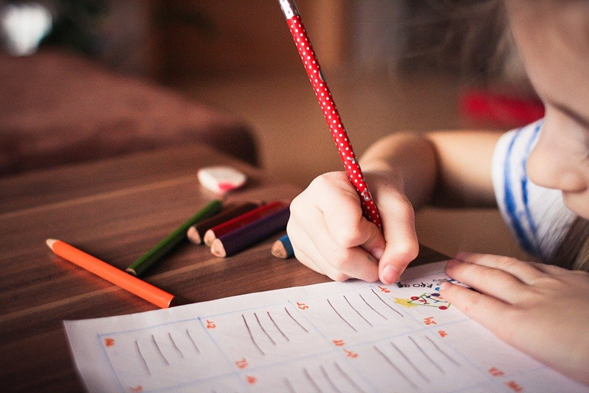
Además, es importante que las actividades sean sencillas y amenas, que permitan que el niño disfrute el proceso y pueda comprender claramente el contenido y que posibiliten el desarrollo de ambos hemisferios cerebrales de acuerdo con la teoría del cerebro triuno: creativo y lógico, fomentando el razonamiento y a su vez la creación a través de dibujos, colores, pinturas, plastilina, entre otros.
Fuente Source: https://pixabay.com/es/photos/ni%C3%B1o-jugar-estudio-color-aprender-865116/
In addition, it is important that the activities are simple and pleasant, that they allow the child to enjoy the process and clearly understand the content, and that they enable the development of both cerebral hemispheres according to the theory of the triune brain: creative and logical, encouraging reasoning and creation through drawings, colors, paints, plasticine, among others. <
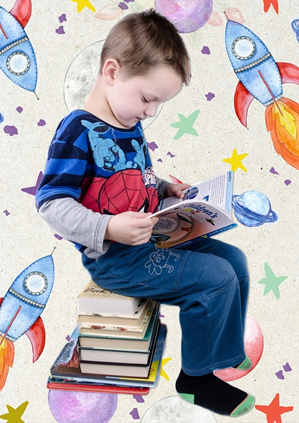
Fuente Source: https://pixabay.com/es/photos/la-lectura-preescolar-2762010/
Otro aspecto importante es relacionar los contenidos a aprender con elementos de la cotidianidad en el hogar, empleando objetos y espacios presentes en el mismo y relacionándolos con las distintas áreas del conocimiento. No podemos olvidar que el aprendizaje significativo parte de la vinculación de la experiencia, los conocimientos previos con los nuevos.
Another important aspect is to relate the contents to be learned with elements of everyday life at home, using objects and spaces present in the home and relating them to the different areas of knowledge. We cannot forget that meaningful learning is based on the linking of experience and previous knowledge with new knowledge. <
¿Cuál es el rol de las familias en la educación a distancia? Definitivamente, el de facilitadoras del proceso de enseñanza y aprendizaje. Se requiere que mamá, papá, abuelos o quien represente al niño se involucre de manera responsable y comprometida con las actividades escolares, respetando la rutina, guiando al niño sin hacer la tarea por él. La idea es que con paciencia y mucho amor explique el contenido para que el niño, por sí mismo, sea quien realice las asignaciones. De esta manera se enseña con acciones los valores de responsabilidad, honestidad y compromiso.
What is the role of families in distance education? Definitely, as facilitators of the teaching and learning process. It is required that mom, dad, grandparents or whoever represents the child gets involved in a responsible and committed way with school activities, respecting the routine, guiding the child without doing the homework for him/her. The idea is to patiently and lovingly explain the content so that the child, by him/herself, is the one who carries out the assignments. In this way, the values of responsibility, honesty and commitment are taught through actions.<
Existen algunas fallas en la educación a distancia dirigida a niños; la principal, desde la visión de quien escribe, está representada por el exceso de tareas escolares que en muchos casos se asigna a los pequeños, haciendo que pasen el día entero escribiendo, dibujando, coloreando y aprendiendo contenidos, lo que trae como consecuencia que las actividades escolares sean vistas como una tortura. Es responsabilidad del maestro sintetizarlas y diversificar la forma de presentar las mismas a fin de evitar que los niños se satures y aburran.
There are some flaws in distance education for children; the main one, from the writer's point of view, is represented by the excess of homework that in many cases is assigned to the little ones, making them spend the whole day writing, drawing, coloring and learning content, which results in school activities being seen as torture. It is the teacher's responsibility to synthesize them and diversify the way they are presented in order to prevent children from becoming saturated and bored.<
Partiendo de esta situación, la familia termina presionando a los niños para que realicen las actividades y avancen de manera rápida, muchas veces de forma inadecuada (gritando o castigando al infante). En otros casos, termina haciendo algunas tareas por los pequeños para tratar de “ayudarlos” lo que en realidad hace que se vuelvan dependientes.
Starting from this situation, the family ends up pressuring the children to do the activities and advance quickly, many times inappropriately (yelling or punishing the child). In other cases, they end up doing some tasks for the children to try to "help" them, which in reality makes them become dependent. <
Ante este panorama, la mejor opción es que la familia se comunique con la maestra y le planteen las debilidades que pueden estarse presentando y que afectan la calidad del proceso de enseñanza y aprendizaje a fin de mejorar la calidad del proceso. La mejor escuela es aquella que aplica la evaluación de manera bidireccional, de forma tal que no solo es el niño quien debe ser evaluado, sino también la propia escuela que dirige la educación del niño para potenciar la calidad.
Given this scenario, the best option is for the family to communicate with the teacher and raise the weaknesses that may be present and that affect the quality of the teaching and learning process in order to improve the quality of the process. The best school is one that applies evaluation in a bidirectional manner, so that it is not only the child who must be evaluated, but also the school itself that directs the child's education in order to enhance quality. <
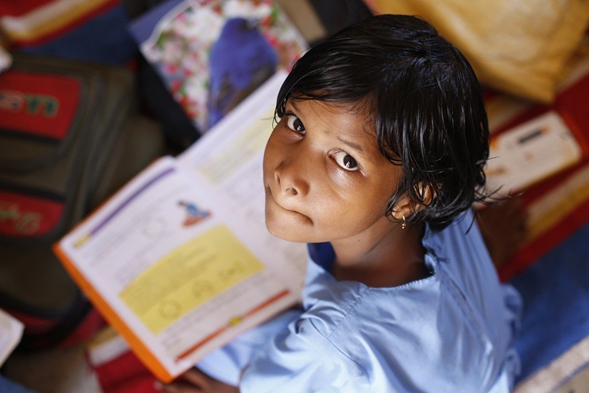
Fuente Source: https://pixabay.com/es/photos/ni%C3%B1os-infantil-ni%C3%B1a-la-escuela-306607/
Si eres docente, te sugiero que te autoevalúes. Recuerda que durante el transcurso de los estudios universitarios fuimos formados para trabajar de manera presencial, por lo tanto, la práctica de la educación a distancia en la educación preescolar y primaria tiene aún muchas páginas en blanco de las cuales tú puedes ser el autor a partir de la investigación permanente desde tu propia práctica.
If you are a teacher, I suggest that you self-evaluate. Remember that during the course of university studies we were trained to work in a face-to-face manner, therefore, the practice of distance education in preschool and primary education still has many blank pages of which you can be the author based on ongoing research from your own practice. <

Estimada colega:
Cómo docente comparto su análisis respecto a la educación a distancia. Ha sido una situación realmente retadora para estudiantes, padres y maestros. Ciertamente, autoevaluar nuestros proceso pedagógico es necesario para elevar la calidad del trabajo a distancia y obtener los mejores resultados.
Congratulations @jamidiamon! You have completed the following achievement on the Hive blockchain and have been rewarded with new badge(s) :
Your next target is to reach 20 posts.
You can view your badges on your board and compare yourself to others in the Ranking
If you no longer want to receive notifications, reply to this comment with the word
STOPCheck out the last post from @hivebuzz:
Realmente es un reto el rol de ser maestros en casa . Es algo que requiere paciencia , disciplina y amor!!!,